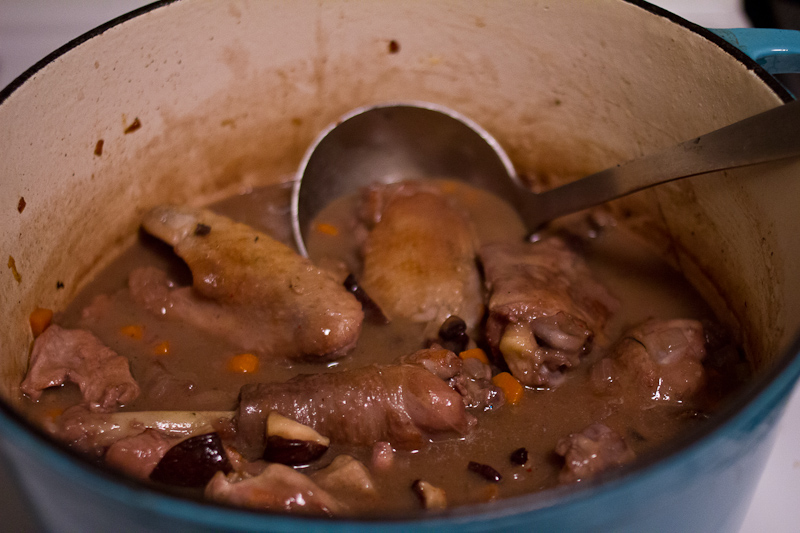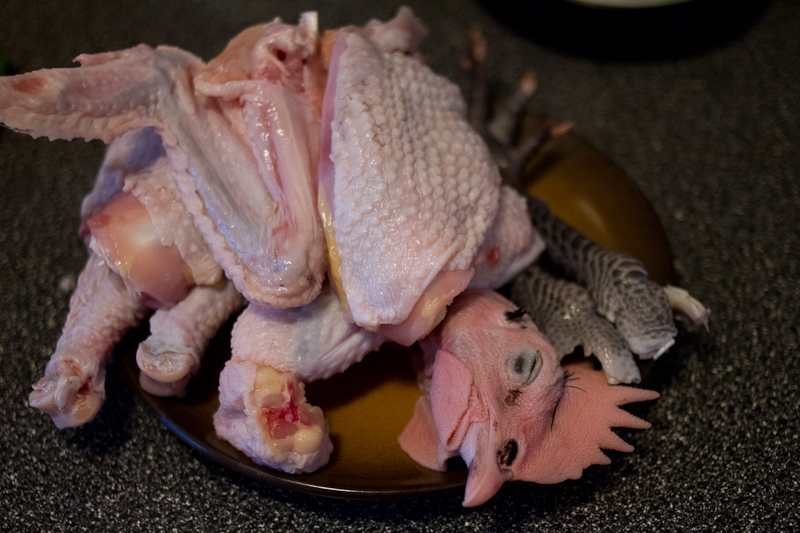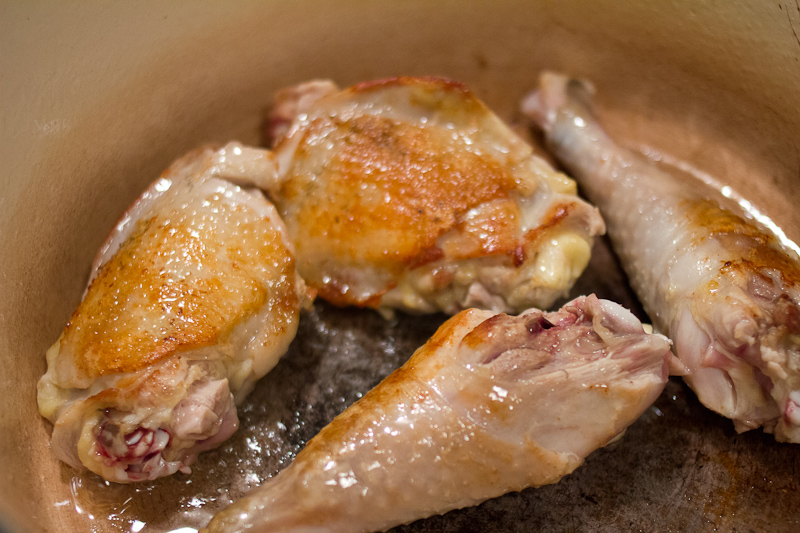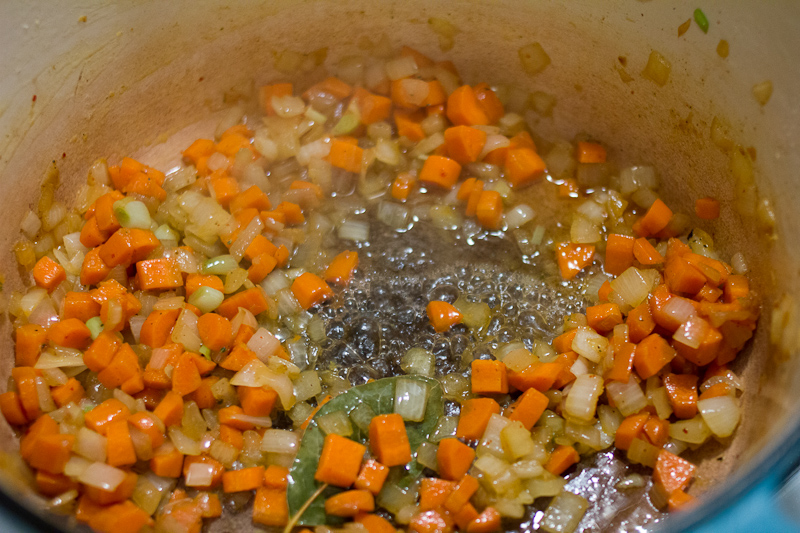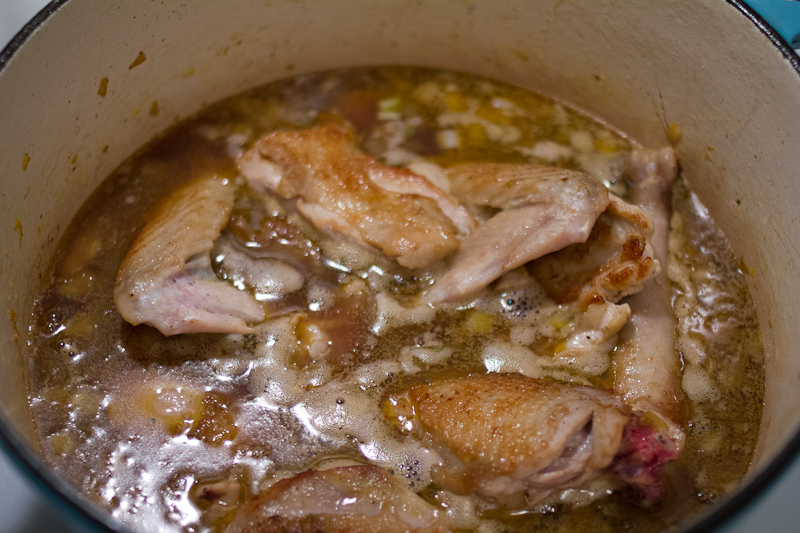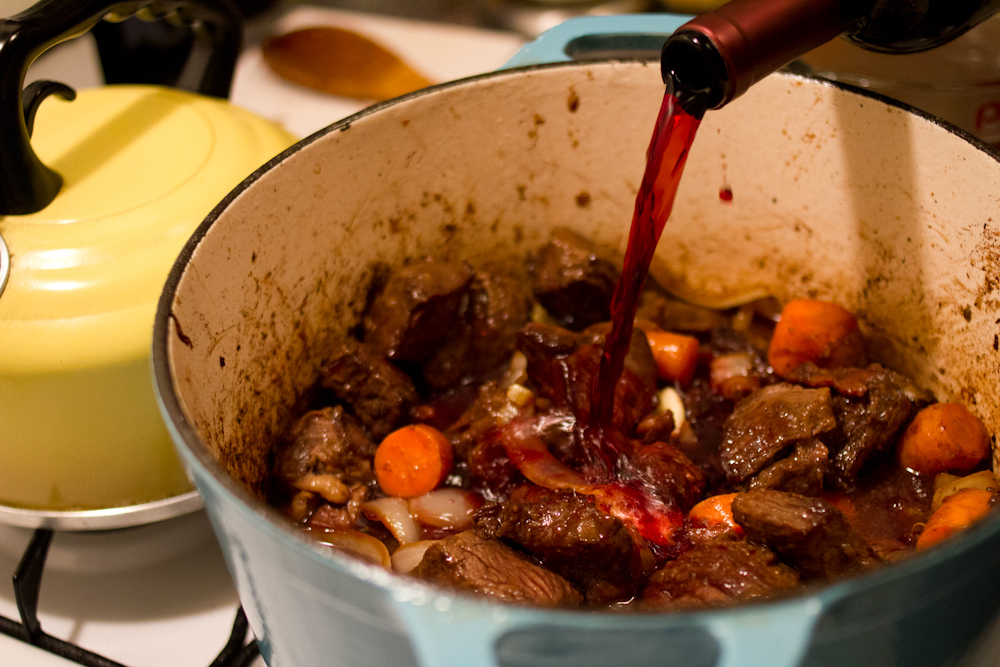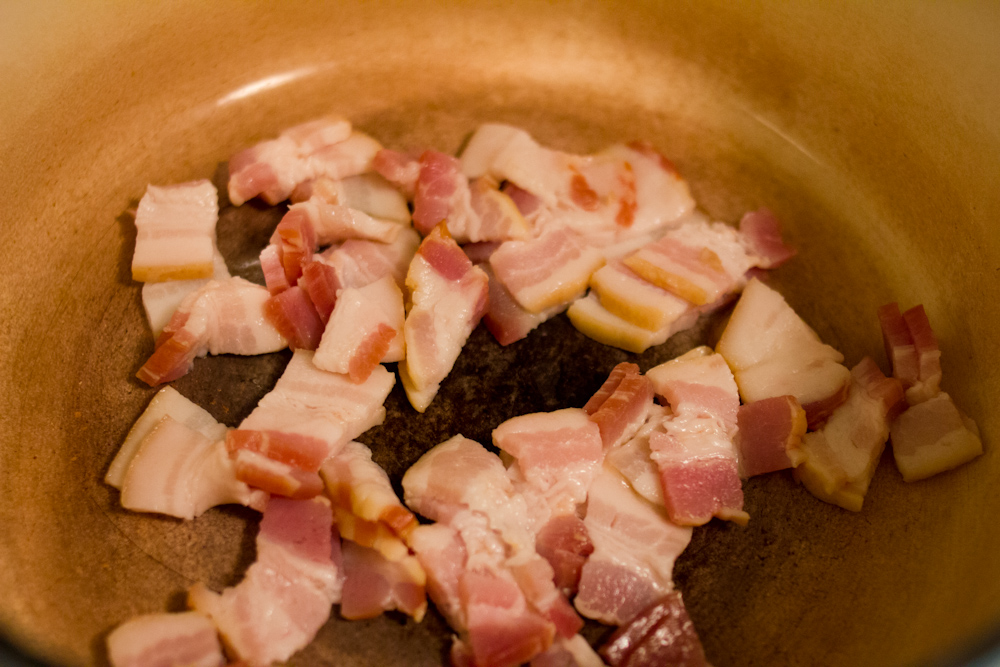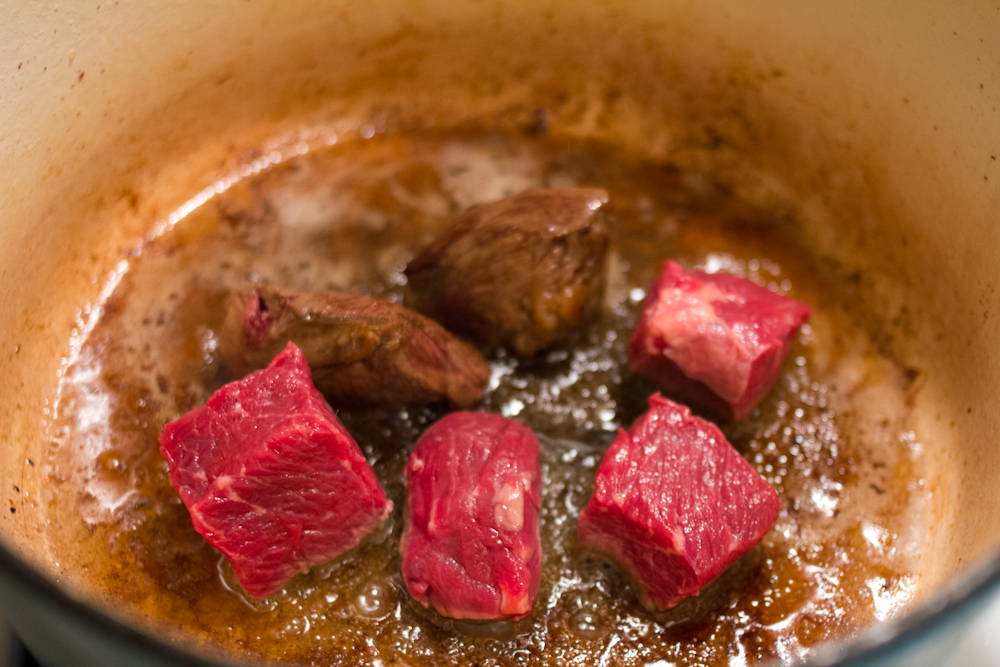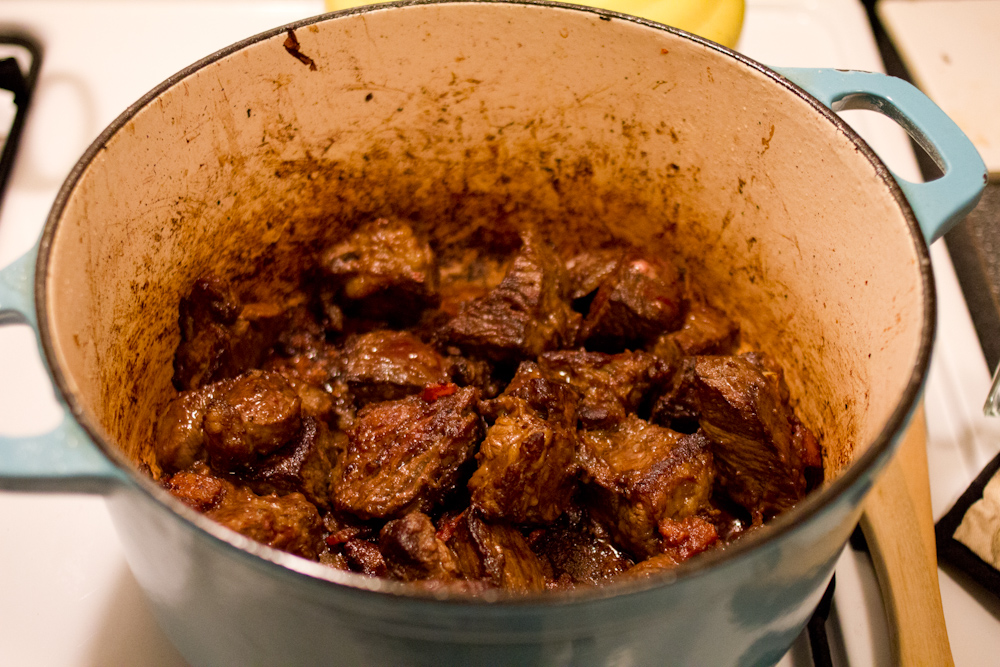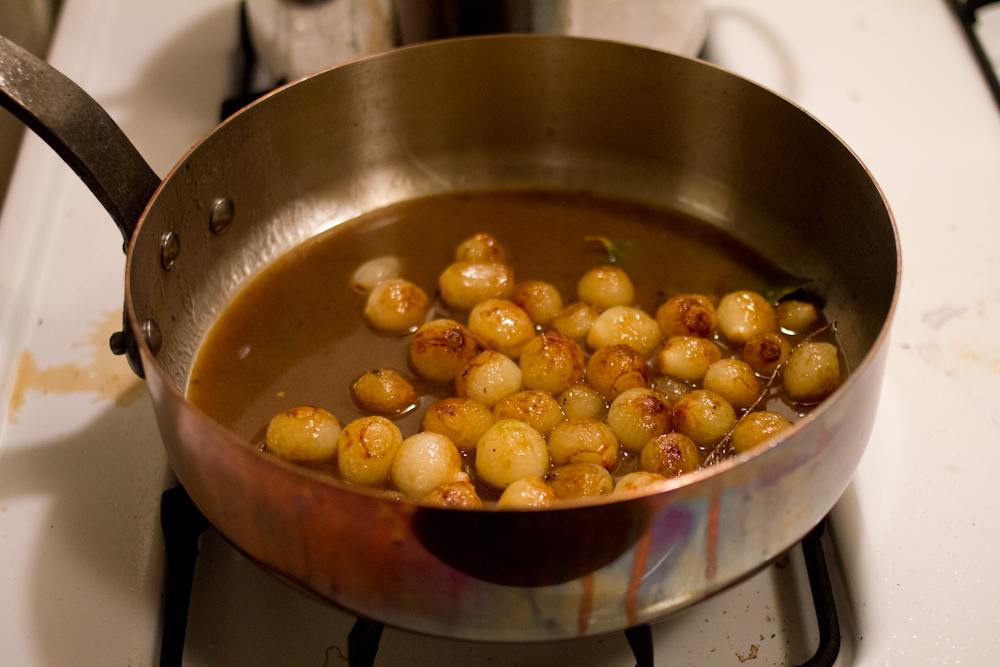The second way we wanted to test cooking our beautiful chicken from Eatwell Farm was to braise it. The first thing that comes to mind when I think of braised chicken is coq au vin, and the second is Julia Child. (I won’t be offended if you click that link right now and improve your day significantly by watching a few minutes of The French Chef).
My love for Julia is great. She’s taught me many things over the years, things that are just as useful in the kitchen as outside of it. The most important is probably confidence (Never apologize!!!), and the second, humor (“They’ll never know!”, she winks and scrapes an omelet that jumped ship right back into the pan). Julia’s warmth and enthusiasm for life are something I aspire to, and when I cook her recipes, I feel that much closer to it.
Coq au vin tastes like comfort. You can’t go wrong with the slow simmered combination of chicken, wine and vegetables, it turns out delicious every time. And it’s impossible to not feel taken care of after you eat it. Isn’t that feeling, that love and community, exactly what inspires us every time we prepare a meal to share.
Coq au Vin, adapted from Julia Child’s Mastering the Art of French Cooking
1-3 to 4 pound chicken, broken down (legs, thighs, wings, breasts, you know the drill)
1 onion, diced
3 carrots, diced
2 cloves of garlic, diced
1/4 cup cognac
2 cups dry red wine
2 cups chicken stock (homemade if you got it, but if not, Better Than Bouillon concentrate isn’t half bad)
a few sprigs of thyme
a bay leaf
salt, pepper
2 tablespoons of bacon fat or oil
3 tablespoons butter
2 tablespoons flour
3/4 pound cremini mushrooms, cut into quarters
Preheat your oven to 300° F. Sprinkle the chicken pieces on both sides with salt. In a dutch oven over medium heat, heat the bacon fat or oil. Brown the chicken pieces on both sides. I’d do it in two batches so you don’t crowd the pan. Remove the browned chicken from the pot and set aside.
Add a bit more bacon fat or oil and sauté the vegetables until the onions are translucent, 7 – 10 minutes. Deglaze the pan with 1/4 cup of cognac and then pour in the wine and chicken stock. Add the chicken back in along with a few sprigs of thyme and a bay leaf. Bring everything to a boil.
Once it boils, cover the pot and put it in the oven. Let simmer for about 40 minutes. Meanwhile, brown the mushrooms. Warm 1 tablespoon of butter in a pan. Add the mushrooms and brown them, stirring occasionally, about 10 minutes. Remove the mushrooms and put them on a plate.
After about 40 minutes, though you could go longer if you have a tough bird, remove the braise from the oven, and put it back on the stovetop. Fish out the chicken pieces and put them aside on a plate.
In the pan you browned the mushrooms in, melt 2 tablespoons of butter. When the butter is melted, add 2 tablespoons of flour. Cook the roux for a few minutes, until it is a light golden brown. Add the roux to the braising juices and whisk to combine. Bring the braising liquid back to a boil and the sauce will thicken nicely. Season the sauce with salt and pepper and then add the chicken and mushrooms back in.
You can serve the coq au vin immediately, or turn off the heat, cover and rewarm when you’re ready to eat. We served ours with mashed potatoes, but rice or pasta would also do just fine. It’s good to have something to soak up the sauce.
Isn’t that roasted chicken head a sight to behold?! The coq au vin is on the left, and Jordan knocked that sauce out of the park.
-Emily
Ps. If you really want to nerd out and love Julia Child even more, read My Life in France, and then read this phenomenal biography by Bob Spitz. And if you’re in a bad mood, watch a few episodes of The French Chef. You cannot help but smile.
